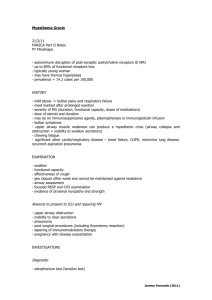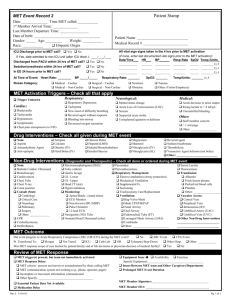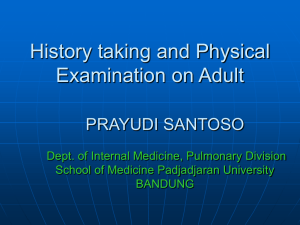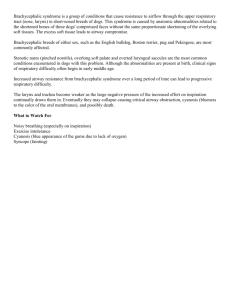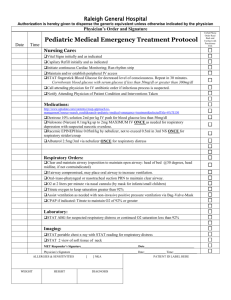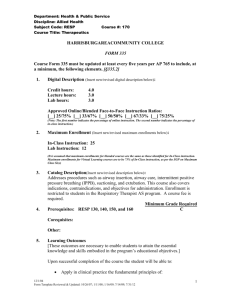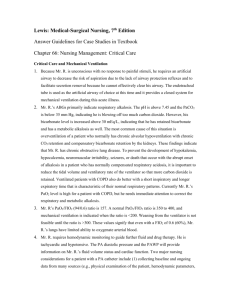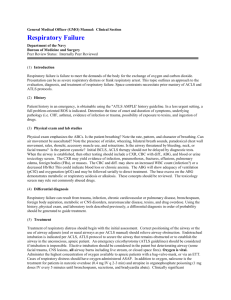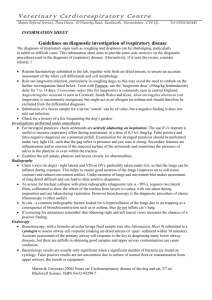EMP 193 - Northeast Alabama Community College
advertisement
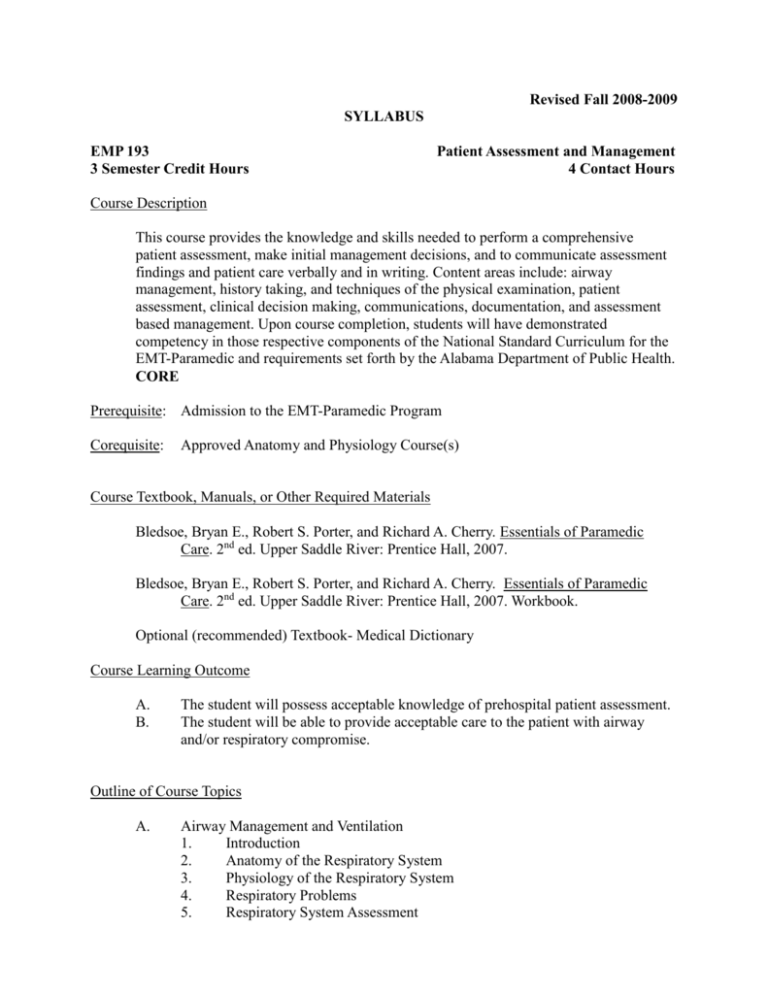
Revised Fall 2008-2009 SYLLABUS EMP 193 3 Semester Credit Hours Patient Assessment and Management 4 Contact Hours Course Description This course provides the knowledge and skills needed to perform a comprehensive patient assessment, make initial management decisions, and to communicate assessment findings and patient care verbally and in writing. Content areas include: airway management, history taking, and techniques of the physical examination, patient assessment, clinical decision making, communications, documentation, and assessment based management. Upon course completion, students will have demonstrated competency in those respective components of the National Standard Curriculum for the EMT-Paramedic and requirements set forth by the Alabama Department of Public Health. CORE Prerequisite: Admission to the EMT-Paramedic Program Corequisite: Approved Anatomy and Physiology Course(s) Course Textbook, Manuals, or Other Required Materials Bledsoe, Bryan E., Robert S. Porter, and Richard A. Cherry. Essentials of Paramedic Care. 2nd ed. Upper Saddle River: Prentice Hall, 2007. Bledsoe, Bryan E., Robert S. Porter, and Richard A. Cherry. Essentials of Paramedic Care. 2nd ed. Upper Saddle River: Prentice Hall, 2007. Workbook. Optional (recommended) Textbook- Medical Dictionary Course Learning Outcome A. B. The student will possess acceptable knowledge of prehospital patient assessment. The student will be able to provide acceptable care to the patient with airway and/or respiratory compromise. Outline of Course Topics A. Airway Management and Ventilation 1. Introduction 2. Anatomy of the Respiratory System 3. Physiology of the Respiratory System 4. Respiratory Problems 5. Respiratory System Assessment B. C. D. E. F G. 6. Basic Airway Management 7. Advanced Airway Management 8. Managing Patients with Stoma Sites 9. Suctioning 10. Gastric Distention and Decompression 11. Oxygenation 12. Ventilation The History 1. Introduction 2. Establishing Patient Rapport 3. The Comprehensive Patient History 4. Special Challenges Physical Exam Techniques 1. Physical Examination Approach and Overview 2. Overview of a Comprehensive Examination 3. Anatomical Regions 4. Physical Examination of Infants and Children 5. Recording Examination Findings Patient Assessment in the Field 1. Introduction 2. Scene Size-Up 3. The Initial Assessment 4. The Focused History and Physical Exam 5. The Detailed Physical Exam 6. Ongoing Assessment Clinical Decision Making 1. Introduction to Critical Thinking 2. Paramedic Practice 3. Critical Thinking Skills 4. Thinking Under Pressure 5. The Critical Decision Process Communications 1. Introduction to Communication 2. Basic Communication Model 3. Verbal Communication 4. Written Communication 5. The EMS Response 6. Communication Technology 7. Reporting Procedures 8. Regulation Documentation 1. Introduction 2. Uses for Documentation 3. General Considerations 4. Elements of Good Documentation 5. Narrative Writing 6. Special Considerations 7. Consequences of Inappropriate Documentation H. 8. Closing Assessment-Based Management 1. Introduction 2. Effective Assessment 3. The Right Equipment 4. General Approach to the Patient 5. Presenting the Patient 6. Review of Common Complaints Methods of Instruction A. B. C. D. E. Lectures Demonstration Supervised Practice Role Play Audio/Visual Presentations Evaluation and Assessment A. B. C. Course Grade Assessment Students who successfully complete this course must accumulate a minimum of 750 of 1000 possible points during the semester. The student must also pass both practical skills and behavioral competencies on a pass/fail basis. Departmental Assessment of Learning Outcomes 1. On a selected written exam the student will demonstrate acceptable knowledge of comprehensive pre-hospital management of a patient illness or injury by scoring a minimum of 75%. 2. In a designated lab exercise, the student will demonstrate correct placement of an endotracheal tube using a standard checklist. Use of Assessment Findings During the Fall In-service of the year following a scheduled review of this course, a committee will review all course assessment materials submitted by the instructors and division chair. The committee will send a report of any recommended curriculum changes to the division chair, who will then submit them to the Curriculum Committee. Upon approval by the Curriculum Committee, a copy will be filed with the Office of Institutional Planning and Assessment. Attendance Students are expected to attend all classes for which they are registered. Students who are unable to attend class regularly, regardless of the reason or circumstance, should withdraw from that class before poor attendance interferes with the student’s ability to achieve the objectives required in the course. Withdrawal from class can affect eligibility for federal financial aid. Statement on Discrimination/Harassment The College and the Alabama State Board of Education are committed to providing both employment and educational environments free of harassment or discrimination related to an individual’s race, color, gender, religion, national origin, age, or disability. Such harassment is a violation of State Board of Education policy. Any practice or behavior that constitutes harassment or discrimination will not be tolerated. Statement of Adherence to ADA Guidelines Instructors will adhere to the Americans With Disabilities Act and/or Section 504 of the Rehabilitation Act (1973) and will publish the following statement on course outlines given to students at the beginning if each semester: “Any individual who qualifies for reasonable accommodations under the Americans With Disabilities Act or Section 504 of the Rehabilitation Act (1973) should notify the instructor immediately.”
